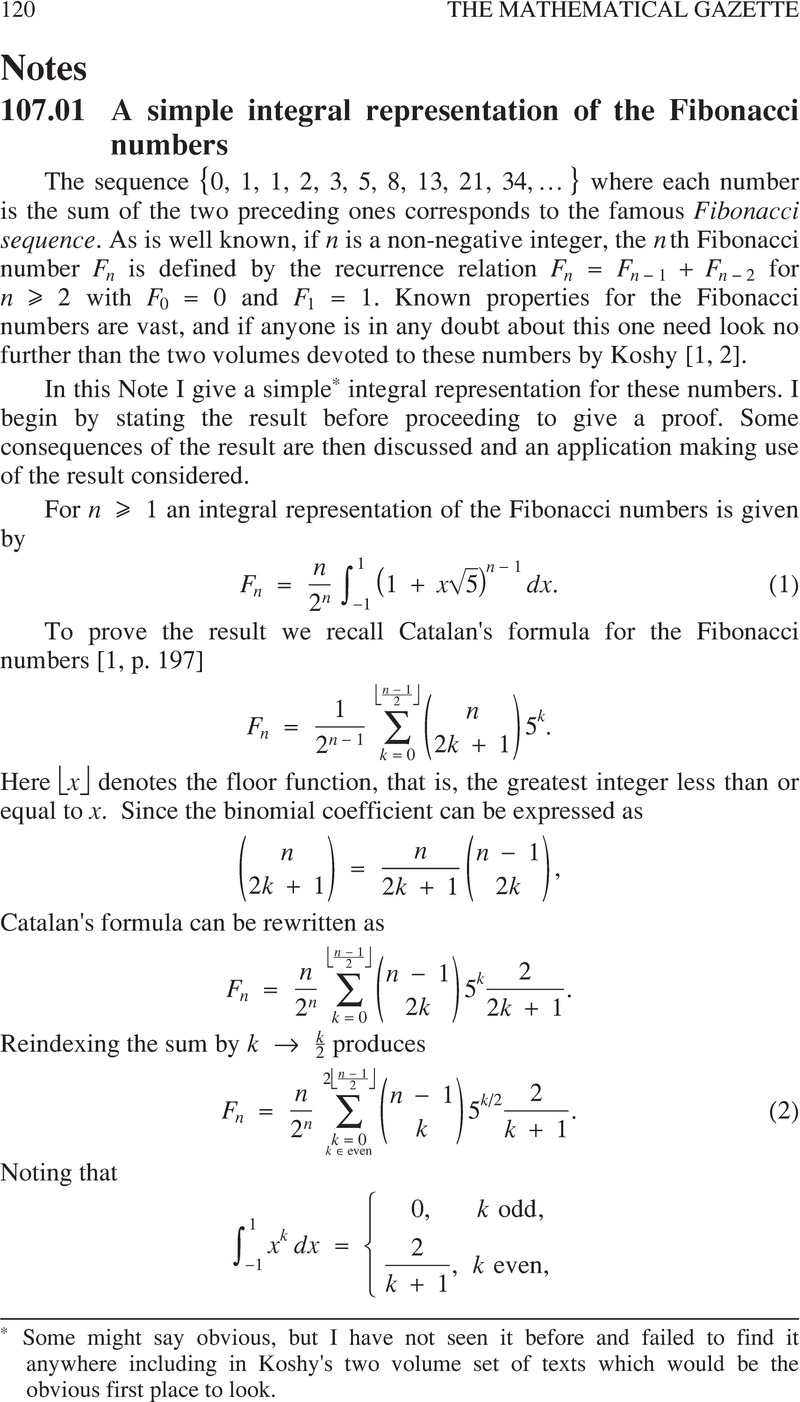Crossref Citations
This article has been cited by the following publications. This list is generated based on data provided by Crossref.
Nilsrakoo, Weerayuth
and
Nilsrakoo, Achariya
2024.
On the Integral Representations of the k-Fibonacci and k-Lucas Numbers.
WSEAS TRANSACTIONS ON MATHEMATICS,
Vol. 23,
Issue. ,
p.
791.
Diaz Noguera, Maribel
Flórez, Rigoberto
Ramírez, José L.
and
Rojas, Martha Romero
2024.
Catalan Identities for Generalized Fibonacci Polynomials.
The Fibonacci Quarterly,
Vol. 62,
Issue. 2,
p.
100.
Nilsrakoo, Weerayuth
and
Nilsrakoo, Achariya
2025.
On One-Parameter Generalization of Jacobsthal Numbers.
WSEAS TRANSACTIONS ON MATHEMATICS,
Vol. 24,
Issue. ,
p.
51.




